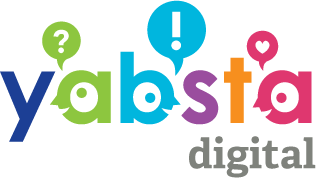
Posted on: August 1, 2013
Posted by: Darryl Jonckheere
Categories:
Branding
Seth Godin, the popular author and venerable thought leader of the marketing industry, once defined a brand as follows:
“A brand is the set of expectations, memories, stories and relationships that, taken together, account for a consumer’s decision to choose one product or service over another.
A brand’s value is merely the sum total of how much extra people will pay, or how often they choose, the expectations, memories, stories and relationships of one brand over the alternatives.”
 This definition serves as a useful reference and practical starting point when laying out the underlying strategies for your organization’s advertising and promotional activities. It also helps us counter the widely held misconception that your brand is merely your logo or the catchy tagline lining your marketing collateral. On the contrary, your brand is much more. In fact your brand is really a complex blend of tangible and intangible characteristics, perhaps more intangible as elaborated upon in Seth Godin’s definition.
This definition serves as a useful reference and practical starting point when laying out the underlying strategies for your organization’s advertising and promotional activities. It also helps us counter the widely held misconception that your brand is merely your logo or the catchy tagline lining your marketing collateral. On the contrary, your brand is much more. In fact your brand is really a complex blend of tangible and intangible characteristics, perhaps more intangible as elaborated upon in Seth Godin’s definition.
Intangible Elements
The intangible attributes of your brand are arguably the most elusive to define aspects of branding your company, product or service. What does your brand represent? What are its core values, its culture, benefits and personality? How does your brand speak to your target audience? These are just some of the key questions that, when answered, can greatly influence the tangible side of your branding equation. These could also be regarded as the things people do not readily see, but rather feel and experience when they engage with your brand. For example, how ergonomically designed is your product and how do customers feel when they use it? When your customers fill out a contact form on your Web site or call your customer service department, how are these interactions handled? In each instance there is an opportunity (or failure) to brand your organization. These are often referred to as brand touchpoints. That is, points of contact between your products and services and customers. These touchpoints form a series of associations, feelings, attitudes and perceptions which ultimately shape people’s opinions of your brand.
Your customers’ associations, feelings, attitudes and perceptions are what essentially differentiate your brand. The challenge is to zero-in on what is most unique about your particular offerings in ways that will be memorable to your prospects. For example, your company may sell financial planning services, but so do dozens of other companies in your immediate locale. The question then arises, how is your company different from the competition in ways that are meaningful to your target customer? One of the first steps in branding your organization is to create a positioning statement or point of difference. This could be written in a few bullet points articulating the essence of your organization’s core purpose along with your brand’s ethos. These points may also encompass more abstract and aspirational qualities such as your company’s mission and vision statements. Your company’s mantra or 30-second “this is what we do” elevator pitch, if clearly defined, will guide your company’s brand positioning efforts in the marketplace and act as a catalyst in the creation of tangible brand elements.
Tangible Elements
Once your brand’s intangible attributes have been clearly defined it’s now possible to start building a visual language around your brand’s essential attributes. Your brand’s visual identity will ideally be expressed through your logoform, wordmark and often a succinct tagline or positioning line. These core elements should distill the essence of your brand’s overarching characteristics and speak to the intangible attributes we defined prior.
If, for example, your brand is luxurious, fun and energetic and caters primarily to a sophisticated urban-minded female audience, then it makes sense to support that narrative with appropriate visual elements. Designing your brand in this context begins with selecting a colour palette and a typographic style that relate to the story you are telling. From there, all imagery and graphic symbolism should optimally relate to your brand’s tone and manner and empathize with your audience’s complex array of wants and needs.
This groundwork will guide all future creative, marketing and design efforts associated with your brand. This includes traditional and digital media campaigns, merchandising, and promotion, all working together to build a loyal customer brand base.
…
Branding your business starts with a coherent understanding of its intangible attributes. Once these elements have been solidified they will support the creation of tangible brand elements. From there we can think about the bigger picture in terms of defining the scope of your branding, which we will discuss in my next post.
image credit: loop_oh
Seth Godin, the popular author and venerable thought leader of the marketing industry, once defined a brand as follows:
“A brand is the set of expectations, memories, stories and relationships that, taken together, account for a consumer’s decision to choose one product or service over another.
A brand’s value is merely the sum total of how much extra people will pay, or how often they choose, the expectations, memories, stories and relationships of one brand over the alternatives.”
 This definition serves as a useful reference and practical starting point when laying out the underlying strategies for your organization’s advertising and promotional activities. It also helps us counter the widely held misconception that your brand is merely your logo or the catchy tagline lining your marketing collateral. On the contrary, your brand is much more. In fact your brand is really a complex blend of tangible and intangible characteristics, perhaps more intangible as elaborated upon in Seth Godin’s definition.
This definition serves as a useful reference and practical starting point when laying out the underlying strategies for your organization’s advertising and promotional activities. It also helps us counter the widely held misconception that your brand is merely your logo or the catchy tagline lining your marketing collateral. On the contrary, your brand is much more. In fact your brand is really a complex blend of tangible and intangible characteristics, perhaps more intangible as elaborated upon in Seth Godin’s definition.
Intangible Elements
The intangible attributes of your brand are arguably the most elusive to define aspects of branding your company, product or service. What does your brand represent? What are its core values, its culture, benefits and personality? How does your brand speak to your target audience? These are just some of the key questions that, when answered, can greatly influence the tangible side of your branding equation. These could also be regarded as the things people do not readily see, but rather feel and experience when they engage with your brand. For example, how ergonomically designed is your product and how do customers feel when they use it? When your customers fill out a contact form on your Web site or call your customer service department, how are these interactions handled? In each instance there is an opportunity (or failure) to brand your organization. These are often referred to as brand touchpoints. That is, points of contact between your products and services and customers. These touchpoints form a series of associations, feelings, attitudes and perceptions which ultimately shape people’s opinions of your brand.
Your customers’ associations, feelings, attitudes and perceptions are what essentially differentiate your brand. The challenge is to zero-in on what is most unique about your particular offerings in ways that will be memorable to your prospects. For example, your company may sell financial planning services, but so do dozens of other companies in your immediate locale. The question then arises, how is your company different from the competition in ways that are meaningful to your target customer? One of the first steps in branding your organization is to create a positioning statement or point of difference. This could be written in a few bullet points articulating the essence of your organization’s core purpose along with your brand’s ethos. These points may also encompass more abstract and aspirational qualities such as your company’s mission and vision statements. Your company’s mantra or 30-second “this is what we do” elevator pitch, if clearly defined, will guide your company’s brand positioning efforts in the marketplace and act as a catalyst in the creation of tangible brand elements.
Tangible Elements
Once your brand’s intangible attributes have been clearly defined it’s now possible to start building a visual language around your brand’s essential attributes. Your brand’s visual identity will ideally be expressed through your logoform, wordmark and often a succinct tagline or positioning line. These core elements should distill the essence of your brand’s overarching characteristics and speak to the intangible attributes we defined prior.
If, for example, your brand is luxurious, fun and energetic and caters primarily to a sophisticated urban-minded female audience, then it makes sense to support that narrative with appropriate visual elements. Designing your brand in this context begins with selecting a colour palette and a typographic style that relate to the story you are telling. From there, all imagery and graphic symbolism should optimally relate to your brand’s tone and manner and empathize with your audience’s complex array of wants and needs.
This groundwork will guide all future creative, marketing and design efforts associated with your brand. This includes traditional and digital media campaigns, merchandising, and promotion, all working together to build a loyal customer brand base.
…
Branding your business starts with a coherent understanding of its intangible attributes. Once these elements have been solidified they will support the creation of tangible brand elements. From there we can think about the bigger picture in terms of defining the scope of your branding, which we will discuss in my next post.
image credit: loop_oh
 This definition serves as a useful reference and practical starting point when laying out the underlying strategies for your organization’s advertising and promotional activities. It also helps us counter the widely held misconception that your brand is merely your logo or the catchy tagline lining your marketing collateral. On the contrary, your brand is much more. In fact your brand is really a complex blend of tangible and intangible characteristics, perhaps more intangible as elaborated upon in Seth Godin’s definition.
This definition serves as a useful reference and practical starting point when laying out the underlying strategies for your organization’s advertising and promotional activities. It also helps us counter the widely held misconception that your brand is merely your logo or the catchy tagline lining your marketing collateral. On the contrary, your brand is much more. In fact your brand is really a complex blend of tangible and intangible characteristics, perhaps more intangible as elaborated upon in Seth Godin’s definition.



